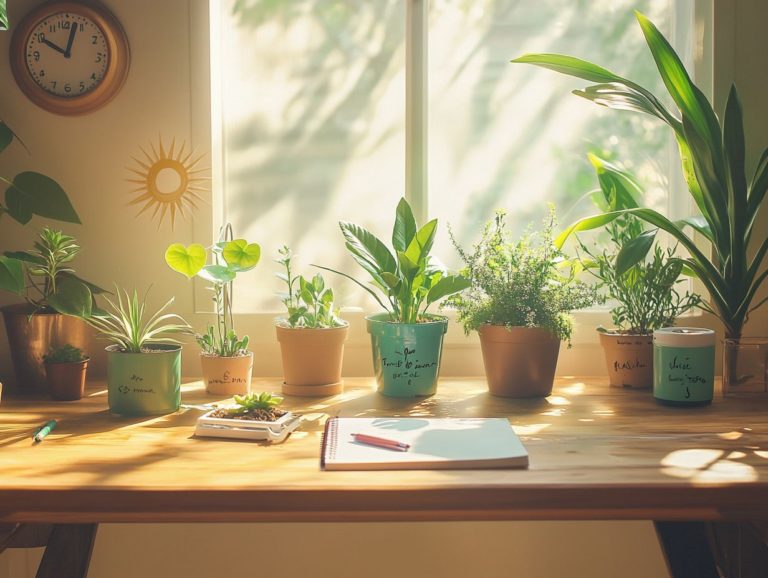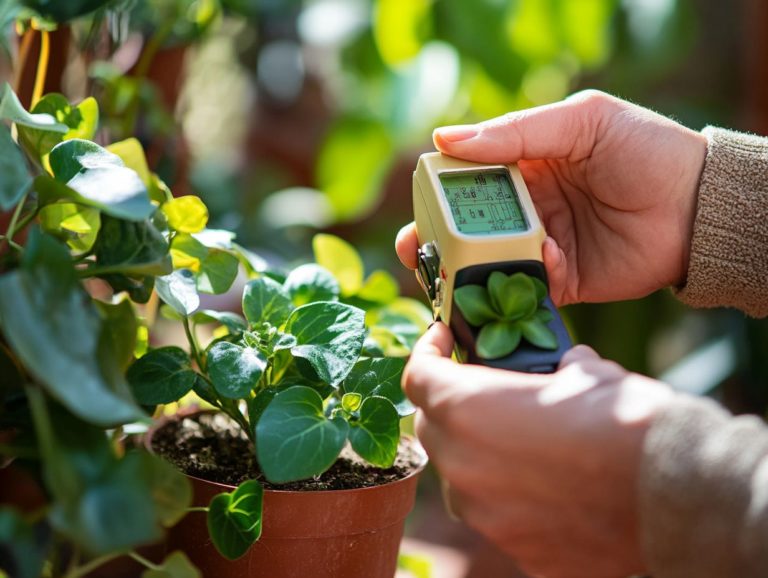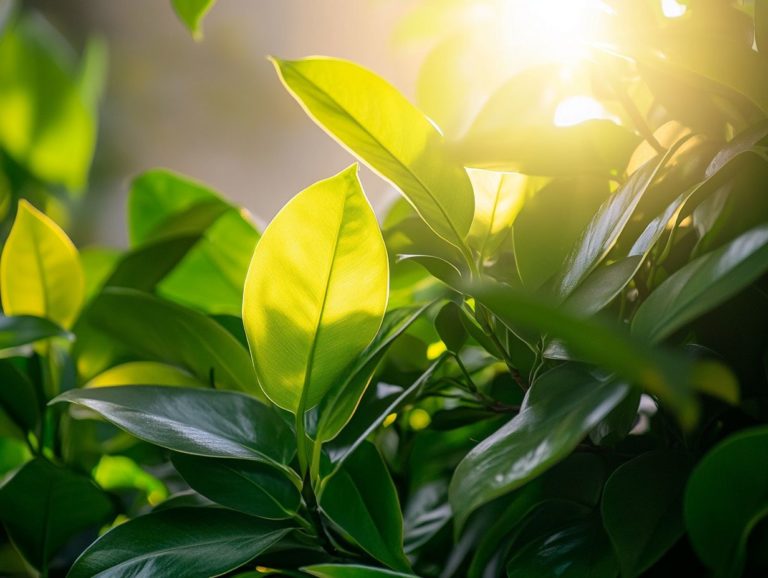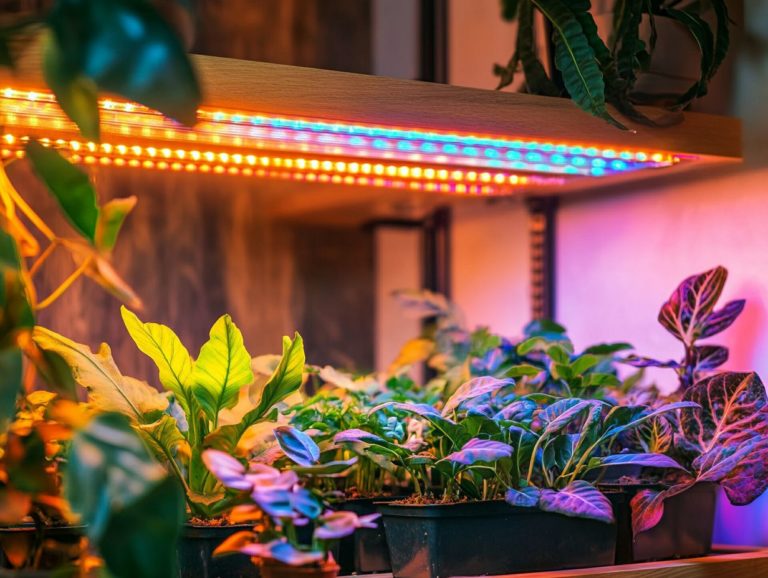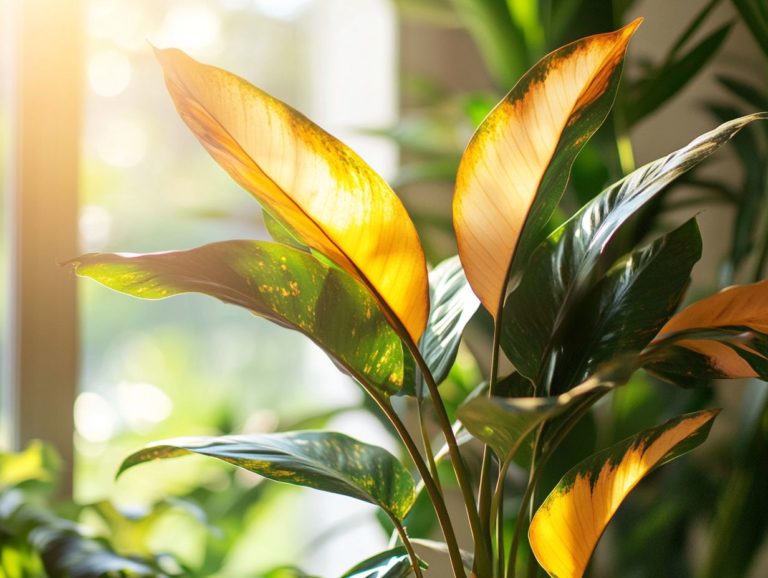Signs Your Plant Needs More Light
Understanding the light needs of your plants is essential for maintaining their health and vitality. This allows them to flourish in your indoor spaces. Tropical varieties, such as Philodendron and Monstera, depend on sufficient sunlight and quality light for crucial processes like photosynthesis, which is how plants turn light into energy.
You should consider factors like the distance from windows, seasonal sunlight exposure, and how placement affects the color and overall well-being of the foliage. By keeping an eye on these elements, you can significantly elevate your indoor gardening success.
Contents
Factors that Affect Plant Light Requirements
Many things can affect how much light your houseplants need. These factors range from the amount of sunlight to the type of plant you have. Take, for example, the unique light preferences among different species. Some plants thrive in bright, direct sunlight, while others are perfectly content in low-light conditions.
Seasonal changes also play a crucial role; as the angle and intensity of sunlight shift throughout the year, you’ll need to adjust their light exposure accordingly.
The environmental conditions in your home also matter like indoor temperature and humidity can enhance or diminish the effects of available light. Don t forget about nutrient availability in the soil either; a well-nourished plant can harness sunlight more effectively, promoting robust growth and vitality. Conversely, if there s an imbalance in nutrients, it can hinder photosynthesis and overall health.
Signs Your Plant is Not Getting Enough Light
Act quickly to ensure your plant s health! Look for signs that your plant isn t getting enough light. You might notice common symptoms such as yellowing leaves, which can signal a lack of energy, or leggy growth where the stems stretch desperately toward the light source.
Small leaves that fail to thrive are another telltale sign. Additionally, if your plant leans or has browning leaves, it s likely struggling to adapt to insufficient sunlight.
Recognizing these symptoms can save your plant! By understanding these signs, you can make the necessary adjustments to enhance the light conditions for your indoor plants, promoting their growth and health.
Key Takeaways:
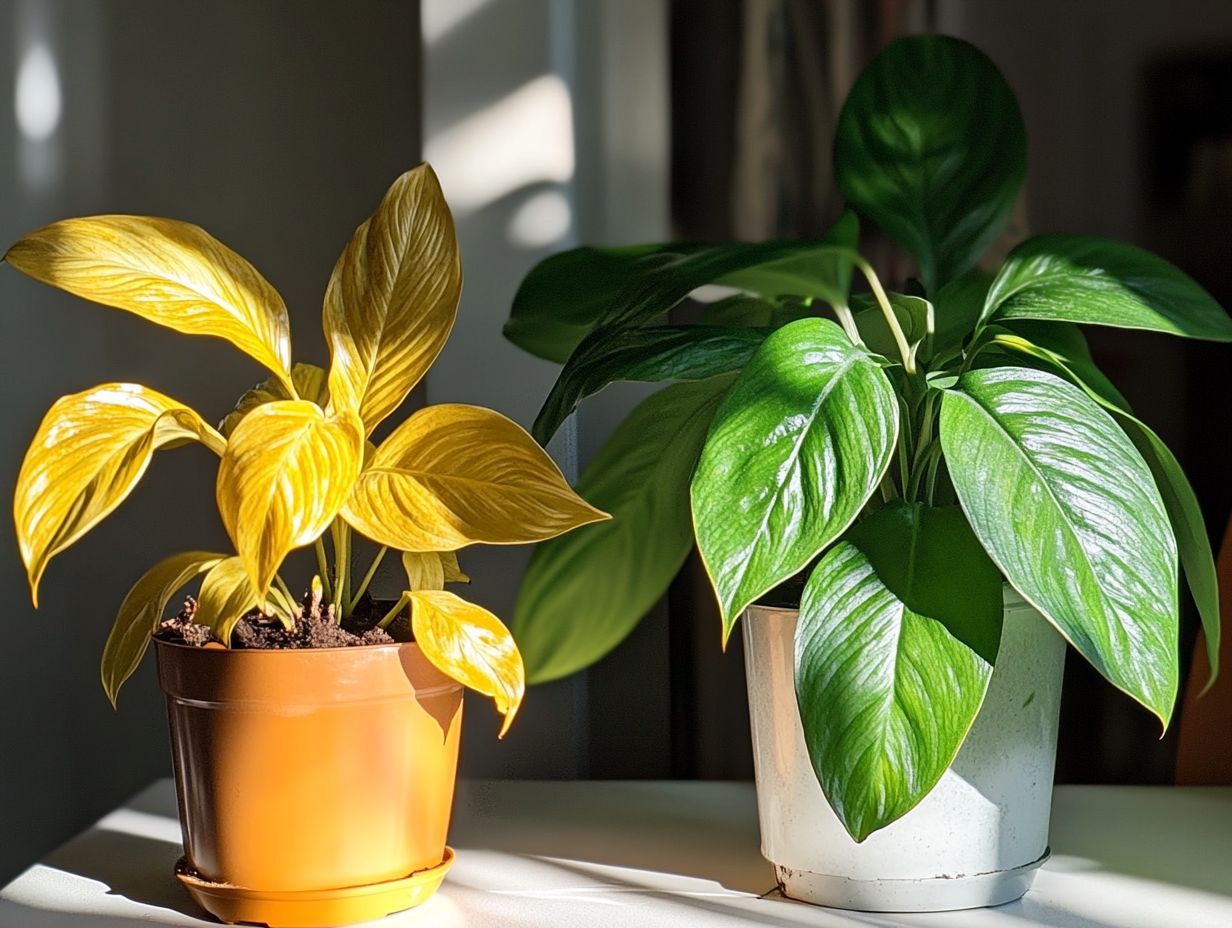
- Plants have specific light requirements that can be affected by factors such as type of plant, location, and season.
- If your plant is showing visible symptoms such as wilting, discoloration, or slow growth, it may not be getting enough light.
- Supplemental lighting options, proper placement and timing, and avoiding common mistakes can help maintain optimal light levels for your plants to thrive.
Visible Symptoms of Insufficient Light

Visible signs of insufficient light can show up in various ways, from subtle color changes to noticeable shifts in growth patterns. These symptoms all indicate that your indoor plants are craving more sunlight energy.
When your plants aren’t getting enough light, their foliage may lose its vibrant colors, becoming a dull green or even yellow. This often suggests nutrient deficiencies that arise from inadequate photosynthesis.
You might also observe stems elongating as the plants stretch toward the nearest light source, a phenomenon called stretching. Additionally, leaves may fold or curl as the plants attempt to conserve energy.
Different species react uniquely to low light conditions. For example, shade-tolerant plants like ferns might seem unfazed, while flowering plants, such as certain orchids, may struggle significantly with flowering and overall health.
Recognizing these symptoms is essential for nurturing a thriving indoor garden. Don’t wait too long to address these signs your plants need your help now!
How to Provide More Light for Your Plants
To provide your plants with the ideal light they need to flourish, consider a range of methods. These will ensure they receive sufficient sunlight or supplemental lighting indoors.
Utilizing grow lights, like the Soltech Aspect Grow Light, can beautifully mimic natural sunlight. This is especially helpful in tricky spots where windows are sparse or sunlight is limited.
You can reposition your houseplants closer to windows or adjust their placement as the seasons change. This enhances their growth and vitality.
Make sure your indoor plants soak up the best light possible for a vibrant display. This will foster new growth and vibrant foliage that truly captivates.
Options for Supplemental Lighting
When natural sunlight falls short, you have several options for supplemental lighting. This ensures your indoor plants receive the energy they need for healthy growth and vibrant foliage.
One of the most popular choices is LED grow lights. These lights are remarkably energy-efficient and can emit specific wavelengths optimal for photosynthesis.
LEDs consume less power and generate less heat, minimizing the risk of overheating your precious plants. Alternatively, fluorescent bulbs especially those designed for plant growth offer a broad spectrum of light that promotes overall health.
Both lighting options can significantly influence growth rates, flowering, and leaf color. This gives you the flexibility to nurture everything from seedlings to established plants.
By selecting the right lighting solution, you can elevate your growing experience while keeping energy efficiency in check.
Common Mistakes in Providing Light for Plants
Common mistakes in providing adequate light for your plants can significantly hinder their growth and overall health. These often arise from misconceptions about their light requirements and exposure.
You might find yourself placing your houseplants in direct sunlight for extended periods. This can lead to overexposure, burning the leaves and creating unsightly brown patches.
Additionally, failing to adjust your plants’ positions as seasons change can result in neglecting the varying intensity of sunlight throughout the year. By acknowledging these missteps, you can make informed decisions that will help your greenery flourish.
Avoiding Overexposure and Other Errors
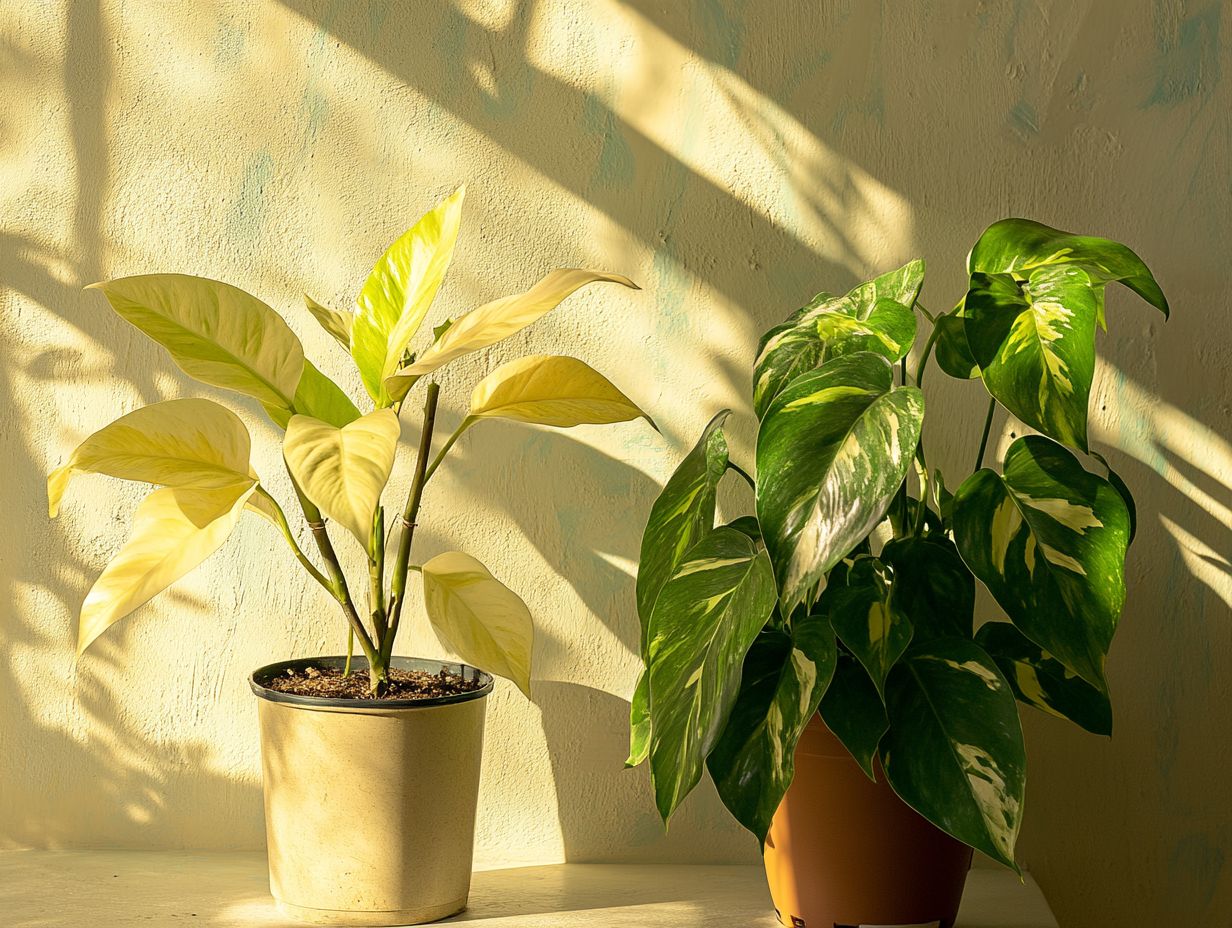
Avoiding overexposure and light-related errors is essential for keeping your indoor plants healthy and thriving.
To achieve this, you must strategically position your plants. Ensure they receive the right amount of light tailored to their specific needs.
Regularly rotating your plants can foster even growth and prevent any side from becoming leggy or weak. Stay vigilant for signs of distress, such as yellowing leaves or stunted growth.
These may indicate improper lighting. By adjusting their exposure and relocating them to a brighter or shadier spot based on what you observe, you can significantly restore their vitality.
Best Practices for Maintaining the Best Amount of Light
Maintaining the best amount of light for your indoor plants requires a mix of best practices and consistent monitoring. This ensures their growth and health over time. Understand the specific sunlight conditions your plant species need to fine-tune your lighting approach.
Employ strategies like rotating your plants regularly, adjusting their distance from windows, and using grow lights during darker seasons. This will help nurture healthy foliage and prevent light-related issues. With these practices, you ll create an environment where your houseplants can thrive.
Tips for Proper Light Placement and Timing
Proper light placement and timing are crucial for your indoor plants to receive enough light to thrive.
Positioning your plants correctly in relation to windows and light sources can greatly impact their growth and health. For maximum exposure, assess the natural light in your home throughout the day. Take a moment to observe how the sun moves across your space.
In the summer, bright windows may need a sheer curtain to soften harsh rays. As seasons change, get ready to move your plants to sunnier spots to help them adjust to the lower light of winter.
Don’t overlook artificial light sources; they can be excellent supplements, especially during shorter days. Timing their exposure to both natural and artificial light will help your plants not just survive but truly flourish.
Frequently Asked Questions
What are some signs that my plant needs more light?
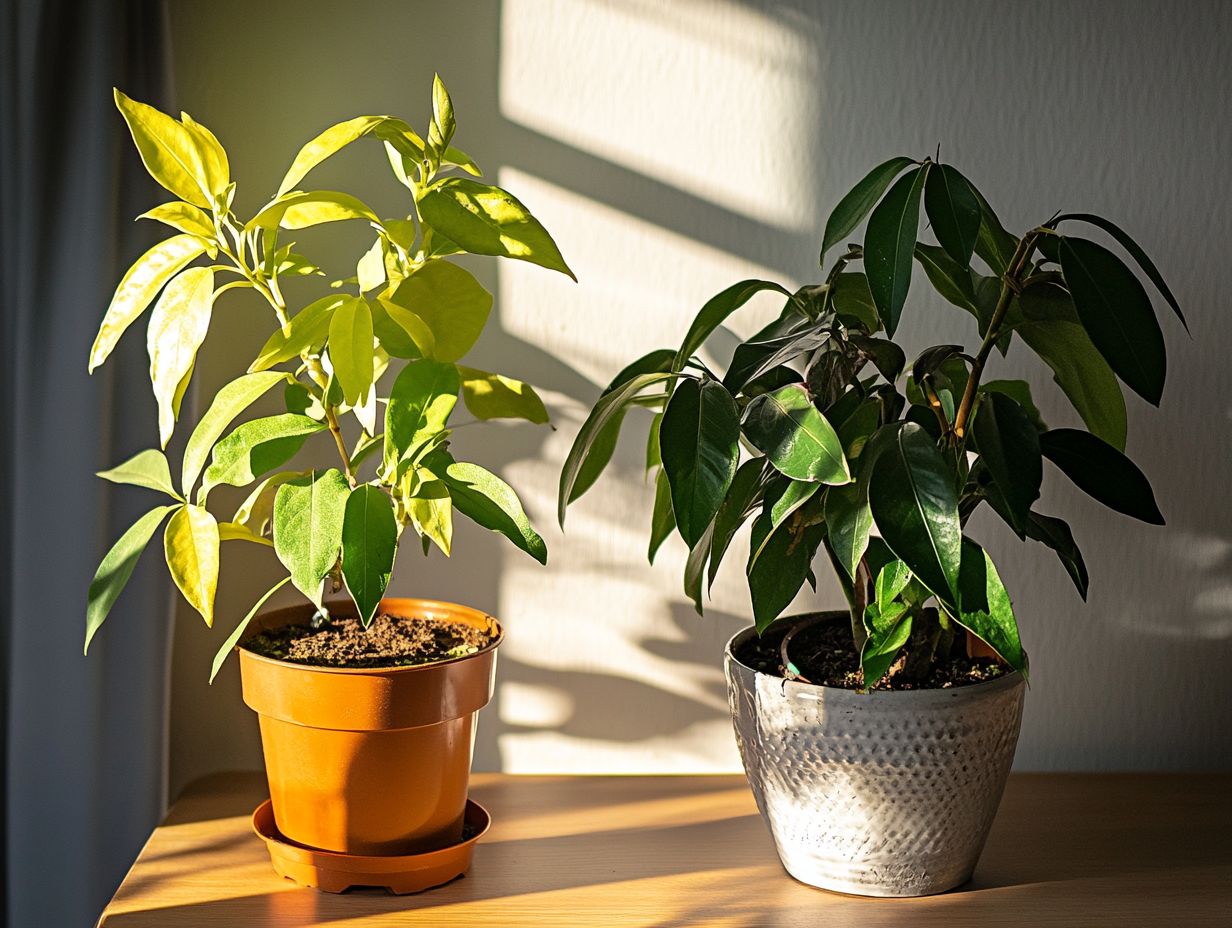
Common signs that your plant needs more light include:
- Pale or yellowing leaves
- Stunted growth
- Leaning towards a light source
How do I know if my plant is getting enough light?
Check your plant’s growth. If it s thriving, it s likely getting enough light. Bright green, firm leaves are also good indicators.
Can I use artificial light for my plants?
Yes, artificial light can be a great source for your plants. Choose a light source with the right spectrum for your plant type. LED grow lights are popular for indoor plants.
What if my plant is getting too much light?
If your plant is receiving too much light, it may show:
- Scorched leaves
- Wilting
Move it to a spot with less direct sunlight or use a sheer curtain to filter the light.
Do all plants require the same amount of light?
No, different plants have different light needs. While some thrive in low light, others need direct sunlight. Research your specific plant s light requirements to ensure it gets the right amount.
What if my plant still isn’t thriving after adjusting the light?
If your plant shows signs of needing more light, even after adjustments, other factors might be involved. Check for issues like improper watering or poor soil. It’s wise to do further research or consult a gardening expert for tailored care instructions.

